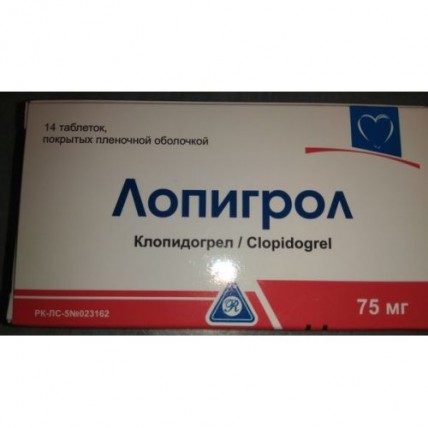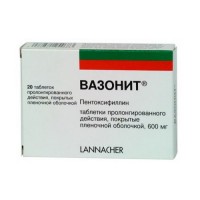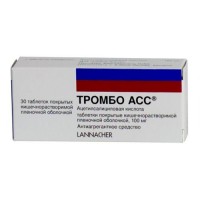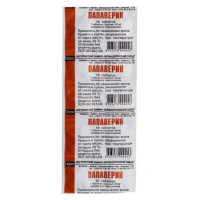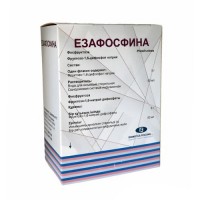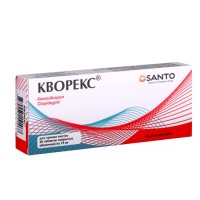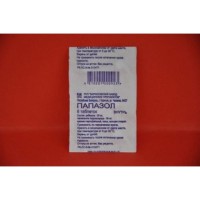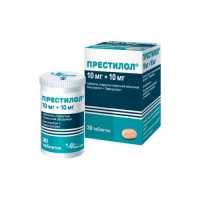Lopigrol 14s 75 mg film-coated tablets
- $21.20
The instruction for medical use of LOPIGROL medicine the Trade name Lopigrol Mezhdunarodnoye the unlicensed name Klopidogrel Lekarstvennaya the Tablet form, film coated Structure 1 tablet contains active agent - klopidogret hydrosulphate 97.857 (it is equivalent to a klopidogrel of 75.0 mg), excipients: hydroxypropyl cellulose, Mannitolum 400, cellulose microcrystalline, a macrogoal 6000, the castor oil hydrogenated structure of a cover: Opadri II pink 85F240091 (the polyvinyl alcohol which is partially hydrolyzed the titan dioxide (E171), a polyethyleneglycol/macrogoal, talc, gland (III) oxide red (E172). Description of the Tablet, round shape, biconvex, film coated light pink color. Pharmacotherapeutic group Anticoagulants. Inhibitors of aggregation of thrombocytes, excepting heparin. Klopidogrel the ATX B01AC04 Code the Pharmacological Pharmacokinetics At properties intake is quickly soaked up, characterized by high bioavailability. Time of achievement of the maximum concentration is about 1 hour. Klopidogrel is a predecessor of active ingredient, biotransformirutsya in a liver with formation of an active metabolite - tiolny derivative which is formed by oxidation of a klopidogrel in 2-oxo-klopidogrel and the subsequent hydrolysis. The active metabolite in plasma is not found. Time of semi-removal of the main circulating metabolite is 8 hours after single and repeated dose. It is removed with urine (about 50%) and excrements (about 46%). The pharmacodynamics Lopigrol – anti-aggregation means, has coronarodilator effect. Selectively it is also irreversible blocks linking of adenosinediphosphate (ADF) with receptors of thrombocytes, suppresses their activation, reduces the number of the functioning ADF-receptors (without damage), interferes with sorption of fibrinogen and inhibits aggregation of thrombocytes. Reduces the aggregation of thrombocytes caused by other agonists by blockade of increase in activity of thrombocytes the released ADF, without affecting activity of phosphodiesterase (FDE). Slowing down of aggregation of thrombocytes is observed in 2 hours after intake of a single dose of drug (40% of inhibition). At repeated use the effect amplifies, and the stable state is reached in 3-7 days of treatment (to 60% of inhibition). Aggregation of thrombocytes and a bleeding time returns to initial level in process of updating of thrombocytes, i.e. in 5-7 days after the termination of reception of Lopigrol. Interferes with development of an aterotromboz in the presence of atherosclerotic defeat of a vessel irrespective of localization of vascular process (cerebrovascular, cardiovascular or peripheral defeats). Indications Prevention of aterotrombotichesky events - the adult patients having a myocardial infarction (from several days to less than 35 days), an ischemic stroke (from 7 days to less than 6 months), or patients with the diagnosed disease of peripheral arteries - the adult patients suffering from a sharp coronary syndrome: - a sharp coronary syndrome without raising of a segment of ST (unstable stenocardia or a myocardial infarction without tooth Q), including the patient who is exposed to stenting during percutaneous coronary intervention in a combination with acetylsalicylic acid (ASK), - the acute myocardial infarction with raising of a segment of ST in a combination with ASK at patients on drug treatment, suitable for performing thrombolytic therapy, Prevention of aterotrombotichesky and thromboembolic events in an atrial fibrillation - adult patients with an atrial fibrillation who have at least one risk factor of a vascular disease with intolerance of the antagonists of vitamin K (AVK) and with low risk of bleeding, for prevention of aterotrombotichesky and thromboembolic events, including a brain stroke, klopidogret the Route of administration and doses For prevention of ischemic disturbances at patients after the had myocardial infarction, an ischemic stroke and the diagnosed disease of peripheral arteries of the adult (is shown in a combination with ASK including to elderly patients) appoint in 75 mg 1 times/day irrespective of meal. Treatment should be begun in terms from several days to 35 days after the postponed myocardial infarction with formation of a pathological tooth of Q and from 7 days to 6 months - after an ischemic stroke. At a sharp coronary syndrome without raising of a segment of ST (unstable stenocardia or a myocardial infarction without tooth Q) treatment it is necessary to begin 300 mg with purpose of a single load dose, and then to continue use of drug in a dose of 75 mg 1 times/day (with co-administration of acetylsalicylic acid in a dose of 75-325 mg/days). As use of acetylsalicylic acid in high doses is connected with big risk of bleedings, the recommended dose has to be not higher than 100 mg. A course of treatment - till 1 year. At a sharp coronary syndrome with raising of a segment of ST (acute myocardial infarction) drug is appointed in a dose of 75 mg 1 times/day with use of an initial load dose in a combination with acetylsalicylic acid in a combination or without trombolitik. For patients it has to is aged more senior 75 years treatment klopidogrely to be carried out without use of a load dose. Combination therapy is begun as soon as possible after emergence of symptoms and continued within at least 4 weeks. The maximum effect is noted in 3 months of administration of drug. Side effects Bleeding is the most frequent reaction reported both in clinical trials and in the post-marketing period where it was registered, mainly, for the first month of treatment. The undesirable reactions noted in clinical trials or stated in spontaneous messages are listed below. Often (≥1/100, & lt, 1/10) - a hematoma and a traumatic bruise - nasal bleeding - gastrointestinal bleeding, diarrhea, an abdominal pain, dyspepsia - bleeding in the place of a puncture Infrequently (≥1/1000, & lt, 1/100) - thrombocytopenia, a leukopenia, an eosinophilia - intracraneal hemorrhage (it was reported about several cases with a lethal outcome), a headache, paresthesia, dizziness - a hematopsia (conjunctival, ocular, retinal) - ulcer of stomach and duodenum, gastritis, vomiting, nausea, a constipation, a meteorism - rash, an itching, hemorrhage in skin (purple) - a hamaturia - lengthening of a bleeding time, decrease in number of neutrophils, decrease in number of thrombocytes Is rare (≥1/10000, & lt, 1/1000) - a neutropenia, including. heavy - vertigo (vestibular dizziness) - retroperitoneal bleeding is Very rare (& lt, 1/10000) - the trombotichesky Werlhof's disease (TWD), aplastic anemia, a pancytopenia, an agranulocytosis, heavy thrombocytopenia, the acquired hemophilia And, a granulocytopenia, anemia - a serum disease, anaphylactoid reactions - hallucinations, confusion of consciousness - disturbance of flavoring perception - heavy bleeding, bleeding from an operational wound, a vasculitis, hypotension - bleedings of a respiratory path (pneumorrhagia, pulmonary bleeding), a bronchospasm, an interstitial pneumonitis, eosinophilic pneumonia - gastrointestinal and retroperitoneal bleeding with a lethal outcome, pancreatitis, colitis (including ulcer or lymphocytic), stomatitis - an acute liver failure, hepatitis, pathological indicators of functional trials of a liver - bullous dermatitis (a toxic epidermal necrolysis, a syndrome Stephens-Johnson, a mnogoformny erythema, sharp generalizirovanny exanthematous pustulez), the Quincke's disease caused by drug intake a hypersensitivity syndrome, the medicinal rash which is followed by an eosinophilia and system manifestations (DRESS syndrome), erythematic or exfoliative rash, a small tortoiseshell, eczema flat deprive - skeletal and muscular bleeding (hemarthrosis), arthritis, an arthralgia, myalgia - a glomerulonephritis, increase in level of creatinine in blood - fever Frequency is unknown - the hypersensitivity which developed as a result of cross-responsiveness to thienopyridinic drugs, such as tiklopidin and prasugret (see. Special instructions) Reportirovaniye of the suspected undesirable reactions of Reportirovaniye of the suspected undesirable reactions is important and after drug registration. It allows to conduct constantly monitoring of a ratio 'advantage/risk' for medicine. Workers of health care it is necessary to ask to report about any suspected undesirable reactions via the national warning system. Contraindications - a liver failure of heavy degree - acute bleeding (for example, in a round ulcer or intracraneal hemorrhage) - hypersensitivity to drug components - children's and teenage age up to 18 years. Medicinal interactions Co-administration of a klopidogrel and heparin, warfarin or other thrombolytic drugs increases risk of bleeding. Lopigrol strengthens effect of acetylsalicylic acid on the aggregation of thrombocytes induced by collagen increases risk of developing of gastrointestinal bleedings against the background of NPVS. It is necessary to avoid simultaneous use of a klopidogrel with omeprazolum and esomeprazoly as there is a reduction of antiagregantny activity. Proofs that other medicines lowering acidity in a stomach such as blockers of H2 and antacids, affect antithrombocytic activity of a klopidogrel no. At combined use of Lopigrol with atenolol, nifedipine and also in a combination with atenolol and nifedipine, clinically significant pharmakodinamichesky interactions were not noted. Besides, considerable influence of simultaneous use of phenobarbital, Cimetidinum and estrogen on Lopigrol's pharmacodynamics was not revealed. The pharmacokinetics of digoxin or theophylline at simultaneous use with Lopigrol did not change. Antacids did not change indicators of absorption of Lopigrol. During the researches of microsomes of a liver of the person it was shown that Lopigrol is capable to inhibit activity of one of enzymes (CYP2C9) of P450 cytochrome (CYP). As a result of it the level of some medicines, such as Phenytoinum and tolbutamide, can be increased in plasma as they are metabolized by means of CYP2C9. As a result of simultaneous use of various drugs, such as diuretics, blockers of β-adrenoceptors, APF inhibitors, antagonists of calcium channels, gipokholesterinemichesky means, coronary vazodilatator, anti-diabetic means, anti-epileptic means, gormonozamestitelny therapy, any signs of side effect it was not revealed. Special instructions At Lopigrol's use the blood test has to be carried out within the first week of treatment in case of combination of drug with acetylsalicylic acid, non-steroidal anti-inflammatory drugs (NPVS), heparin, inhibitors of a glycoprotein IIb/IIIa or fibrinolitikama and also at the patients subject to the increased risk of bleeding connected with an injury, surgical interventions or other morbid conditions. At the planned surgical interventions the course of treatment by Lopigrol should be stopped in 7 days prior to operation. Klopidogrel it is not necessary to appoint in an acute period of an ischemic stroke (in the first 7 days). It is necessary to appoint drug with care at patients with impaired renal function, at patients with risk of bleedings (especially gastrointestinal and intraocular) and also the patient with moderate abnormal liver functions at which developing of hemorrhagic diathesis is possible. Use in pediatrics Drug is contraindicated to use for children and teenagers up to 18 years. Pregnancy and a lactation during pregnancy Lopigrol is appointed only on strict medical indications. In need of prescribing of drug in the period of a lactation it is necessary to stop breastfeeding. Features of influence of medicine on ability to run the vehicle or potentially dangerous mechanisms of Any signs of deterioration in ability of driving or reduction of mental working capacity after Lopigrol's reception it was revealed not. Overdose Symptoms: lengthening of a bleeding time and following from this complication. Treatment: transfusion of platelet concentrate. There is no specific antidote. A form of release and packing On 14 tablets in blister strip packaging from a film of polyvinylchloride/polyvinyldichloride and aluminum foil. On 1 or 2 blister strip packagings together with the instruction for medical use in the state and Russian languages put in a box of cardboard. To Store storage conditions at a temperature not above 25 °C. To store out of children's reach! 3 years not to apply a period of storage after an expiration date. Prescription status According to the prescription the Producer Uorld Meditsin Ilach Sang. ve Tidzh. A.Sh., Turkey (Bagdzhylar Ilchesi, Gyuneshli, Evren Makhallesi, Dzhami Yolu Dzhad. No. 50 K. 1B Zemin 4-5-6, Istanbul) 'World Medicine İlaç San. ve Tic. A.Ş.', Turkey (Bağcılar İlçesi, Güneşli, Evren Mahallesi, Cami Yolu Cad. No: 50 K. 1B of Zemin 4-5-6, İstanbul). The owner of the registration certificate of ROTAFARM ILACHLARY LIMITED of SHIRKETI, TURKEY the Address of the organization accepting in the territory of the Republic of Kazakhstan claims from consumers on quality of products of RK, TROKA-S PHARMA LLP, Almaty, Suyunbaya Ave., 222 B Ph. / fax: 8 (7272) 529090 Address of the organization responsible for post-registration observation of safety of medicine: TROKA-S PHARMA LLP, RK, Almaty, Suyunbaya Ave.
to Develop 222 B
to Develop 222 B
